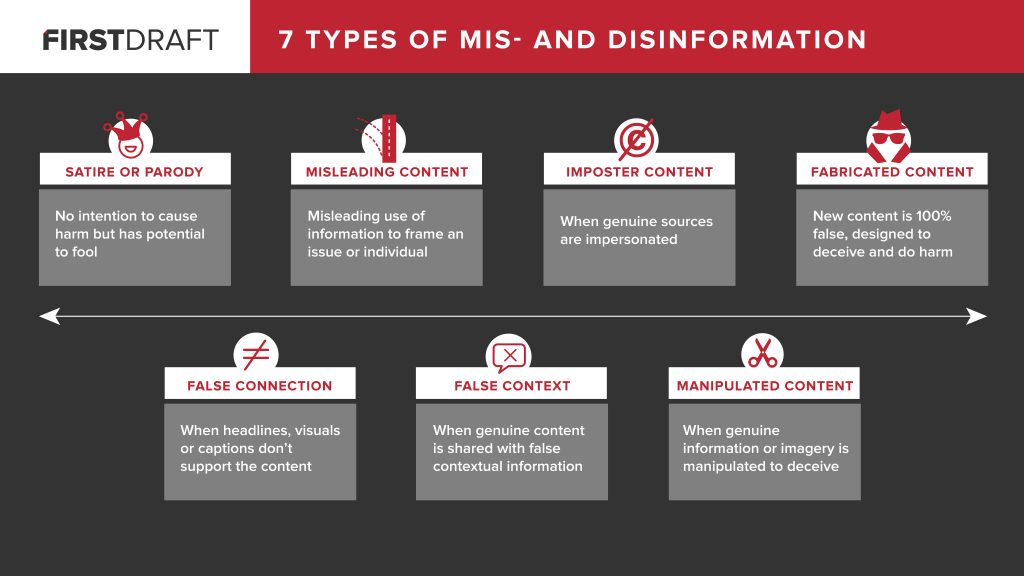
As a library, one of our core objectives is to help people find accurate and reliable information. When a news source looks legitimate, but sources are not cited and reporters are not named, there is a risk that it is not a reliable news source, and instead falls under the category of fake news.
The New York Times has defined fake news as “false or misleading content masquerading as legitimate news." Gone are the days of the evening news or morning paper serving as primary sources of information. Today we are subject to a non-stop stream of information through 24-hour news channels, social media, and even propaganda under the disguise of local news.
Fake news is more than a completely made-up news story. Some stories may be based in truth but lack context or any confirmed sources. Other stories may include basic facts but omit crucial information, include intentionally provocative language, or present a singular point of view. Fake news is only one part of the bigger mis- and disinformation ecosystem.
Types of Fake News
"Fake news" as a concept is not entirely new. Tabloid journalism, which has featured sensationalized stories in periodicals including The National Enquirer, National Examiner, and The Globe, dates back to the nineteenth century. There are several satirical publications as well, with The Onion, established in 1988, being the most well-known. According to First Draft News, a nonprofit focused on providing guidance on misinformation, there are seven types of mis- and disinformation:

Source: firstdraftnews.org. Click to enlarge.
How to Evaluate
The News Literacy Project recommends following these steps to cut through the noise and evaluate sources for credibility as well as red flags:
-
Do a quick search: Conducting a simple search for information about a news source is a key first step in evaluating its credibility.
-
Look for standards: Reputable news organizations aspire to ethical guidelines and standards, including fairness, accuracy, and independence.
-
Check for transparency: Quality news sources should be transparent, not only about their reporting practices but also about their ownership, editorial staff, and funding.
-
Examine how errors are handled: Credible news sources are accountable for mistakes and correct them. Do you see evidence that this source corrects or clarifies errors?
-
Assess news coverage: An important step in vetting sources is taking the time to read and assess several news articles.
Source: newslit.org/educators/resources/is-it-legit
Other Resources
-
FactCheck.org: A nonpartisan, nonprofit “consumer advocate” for voters that aims to reduce the level of deception and confusion in U.S. politics.
-
Media Bias/Fact Check: An independent online media outlet dedicated to educating the public on media bias and deceptive news practices.
-
PolitiFact: PolitiFact is a fact-checking website that rates the accuracy of claims by elected officials and others who speak up in American politics.
-
CRAAP Test: This process will help you determine if a source is credible and help you identify if it is relevant to your research.
-
Poynter: A non-profit journalism school and research organization. Their site contains excellent fact-checking resources and their MediaWise section offers support for teaching media literacy concepts.
-
Newsguard: A Google Chrome extension that provides trust ratings for online news. Those ratings are generated by humans, not algorithms.
-
How False News Can Spread: A video from TED-Ed.
-
How to Choose Your News: A video from TED-Ed.




